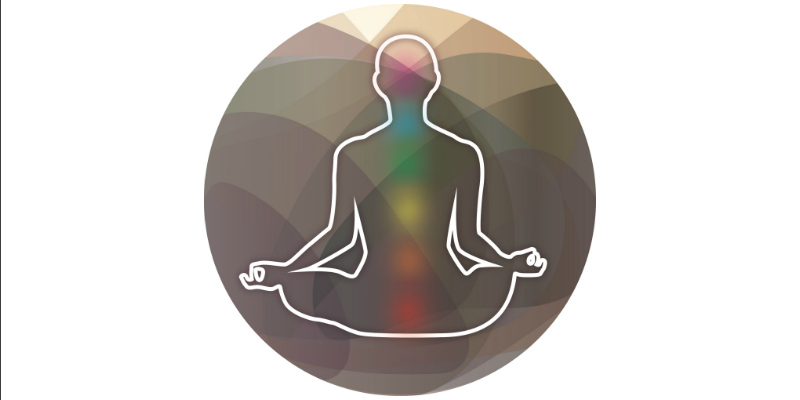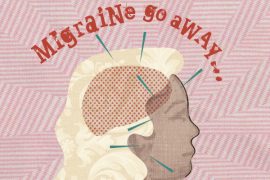By Marni McEntee | Illustration by Ann Christianson
In our often-hectic lives, charged positively or negatively by everything around us, it seems more important than ever to realign our energy away from what might harm us and toward what might do us some good.
If you’re in need of a little healing and ready for some mind-body work, consider the ancient Chinese practice of Qigong. Qi (pronounced “chee”) means energy and gong means the management of energy. The practice, composed of carefully focused postures, exercises, breathing techniques and meditations, is often called meditation in motion.
“Qigong is a learning and experimentation around how to manage your energy, or your internal life force—the internal life force being that source of our vitality, our physical nature, our mental state of wellbeing,” says Qigong instructor Dianne Jean Aldrich. While the practice may seem similar to Tai Chi, it actually predates it. And, its movements tend to be gentler and easier on the joints and muscles than Tai Chi might be for some practitioners. Tai Chi, in turn, is the predecessor of martial arts.
Aldrich teaches Qigong at her 4Pillars4Health EcoSpace, a wooden roundhouse on her wooded property in Monona. The Madison native left home at 19 to become a professional dancer in New York and succeeded on Broadway, musical theater and in jazz dance. When she returned to the Madison area 14 years later, she’d also steeped herself in the martial arts and been schooled by a Shaolin Qigong master, Sifu Pragata Blaise.
Now she leads group Qigong classes, along with working as a life coach, doing body work and teaching Pilates. She also offers classes for patients and the community at UW Health’s American Center.
At a recent Qigong class in the roundhouse she calls a yurt, she helped a half-dozen women run through an hourlong practice meant to help the Qi (energy) move freely through the body’s 12 meridians, the pathways through which vital energy is said to flow. The practice is meant to help a person become at the same time focused and relaxed.
“This allows for mental clarity, emotional stillness and physical fitness at a high level because your organs are functioning at their fullest potential,” Aldrich says.
In this class, Aldrich paused regularly to check in with each student on how they were feeling at the moment, physically and mentally. Between some of the postures, students were invited to let their bodies go, prompting some to sway, some to prance around the room and others to close their eyes, breathe deeply and stretch. The pause and relaxation and free flow of movement is as important, says Aldrich, as the focused movement.
“The energy just needs to be free,” Aldrich says. “It doesn’t need to continue to be in the structure, the structure of work, the structure of home, the structure of schedule. It needs to have structure and then freedom and then structure and then freedom. Because that’s the balance of the yin and the yang.”
Susan Marsden says the class has done wonders for her. The former ballet teacher who once taught Aldrich at the local Kehl School of Dance has now become the student.
“I equate Qigong with a journey and she is the guide,” Marsden says of Aldrich. “It would be useful for just about anybody,” adding that Aldrich creates a safe, caring and warm space for all.
When Marsden began taking the classes, she’d had some mobility issues due to injuries. As a former dancer herself, she wanted to make sure she still kept moving, no matter what.
“What I like about Qigong is that it offers a keen awareness of how and why I’m doing what I’m doing [in class], how it feels and how it fits with my body.”
Marsden encourages others to give Qigong a try. Maybe it will be as life changing for them as it was for her, maybe not.
“I’m a lifer,” she says, “It’s very supportive of what I want to do on a daily basis. It’s interesting that something so simple creates such a garden of flowers in my head.”
The yurt itself is a lovely space. Its floorboards were salvaged from the floor of the downtown Madison performance space that was replaced by the Overture Center. A wood burning stove is there for warmth during the winter months, and windows and skylights let in the natural light.
The experience is going to be different for each student, Aldrich says. But one way or the other, each person is meant to tap into their awareness—or lack of awareness. “Everything I do here is about transformation. Qigong is about transformation.
Balancing the body’s energy can have life changing effects, and may even relieve pain, prevent injury and heal illness, she says.
“If we bring our health care all the way back to our energy source and clear, purify, strengthen and revitalize that, our body can do what it’s meant to do. Which is heal itself.”
Aldrich hosts the Qigong master Sifu Pragata Blaise for classes and workshops at the EcoSpace Oct. 23-29. Details at 4pillars4healthecospace.com.




